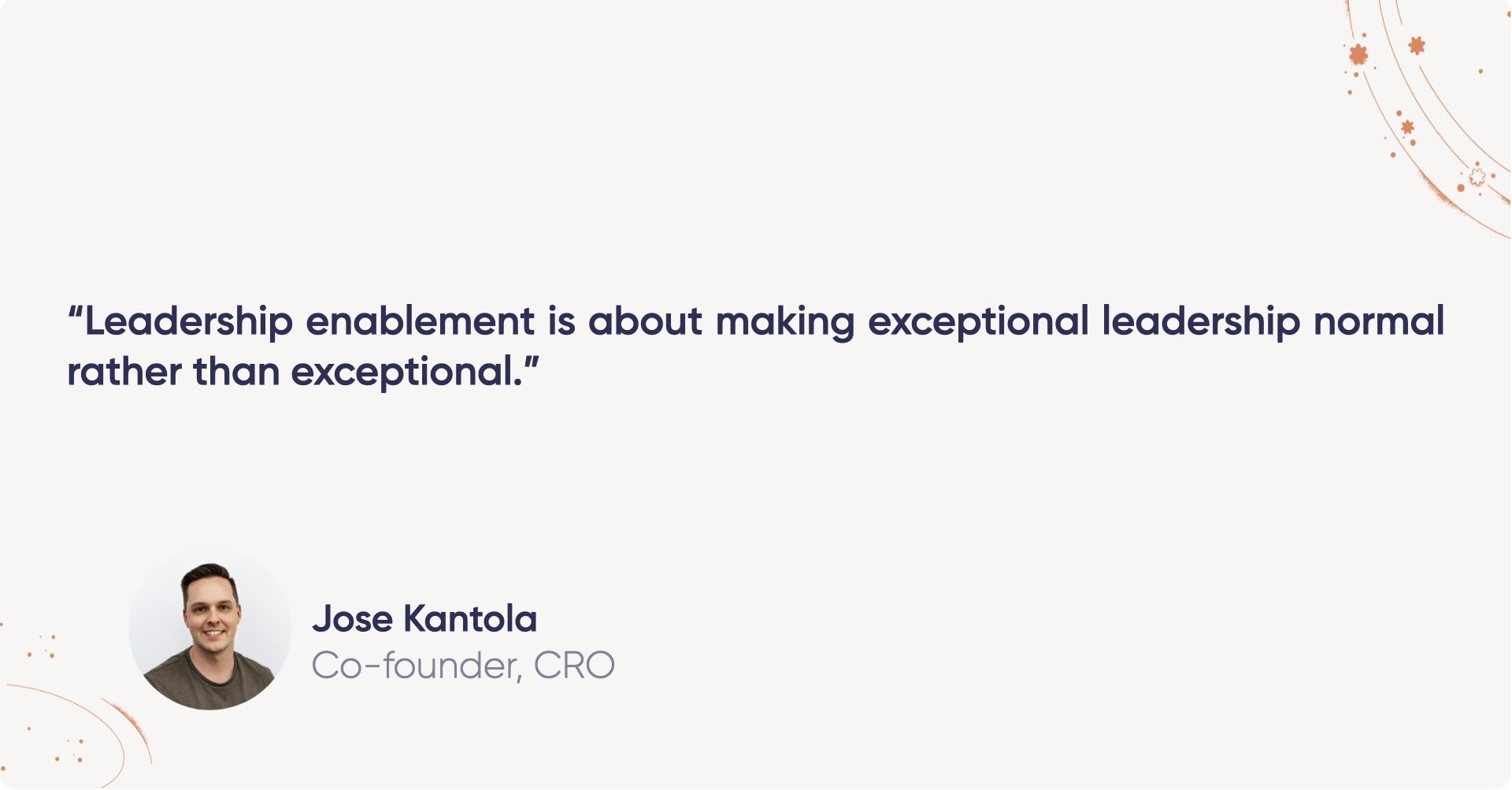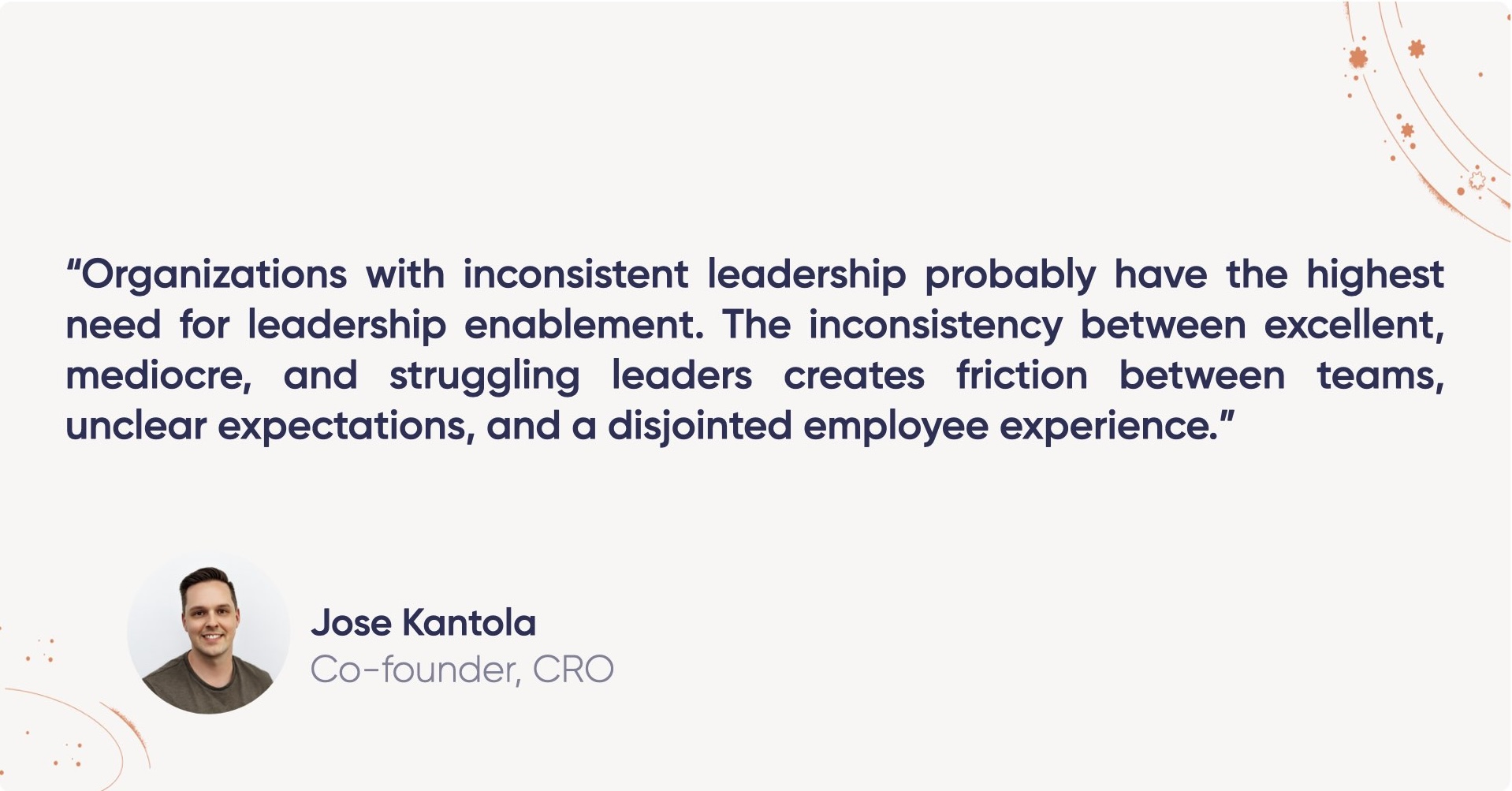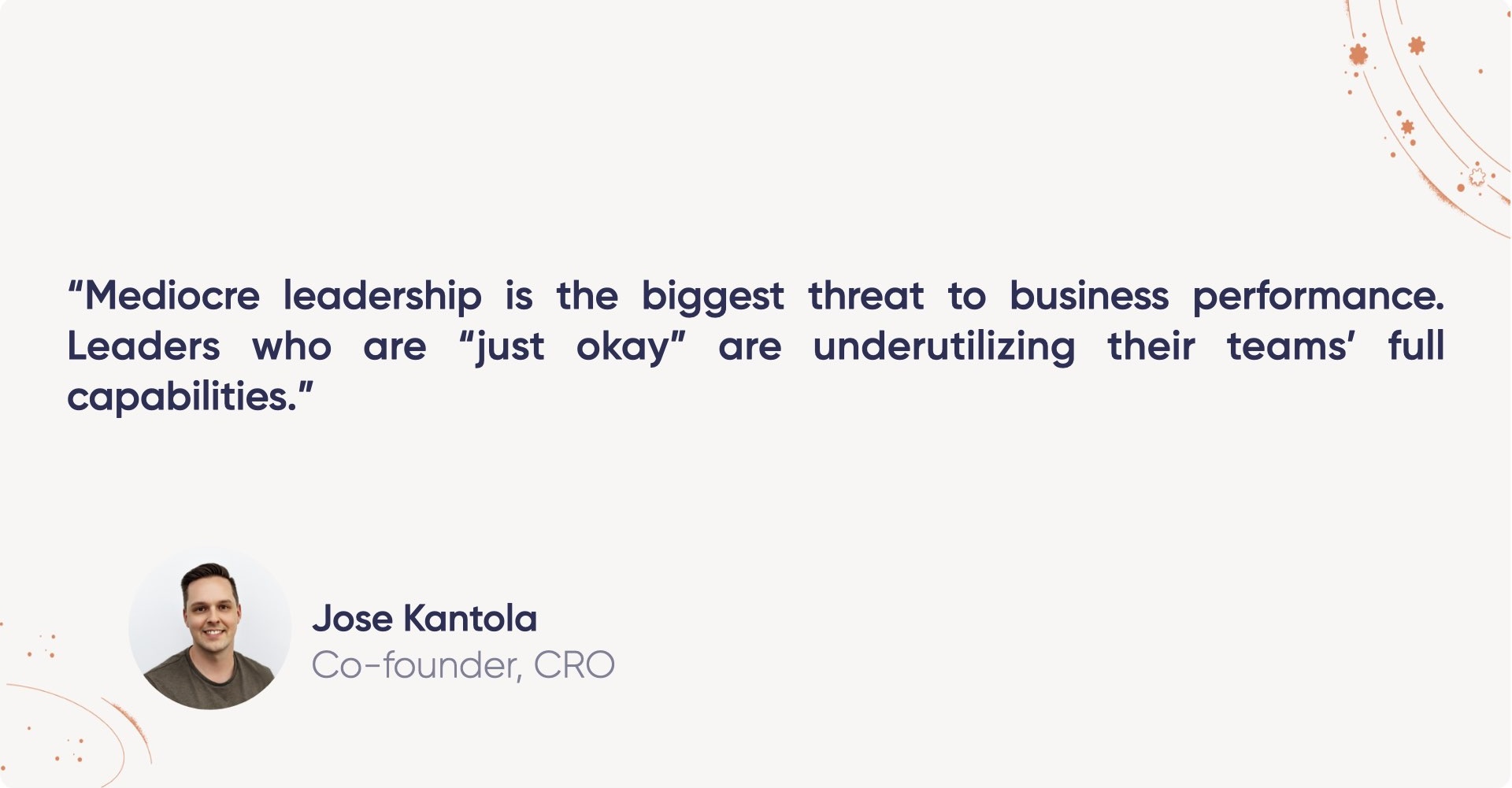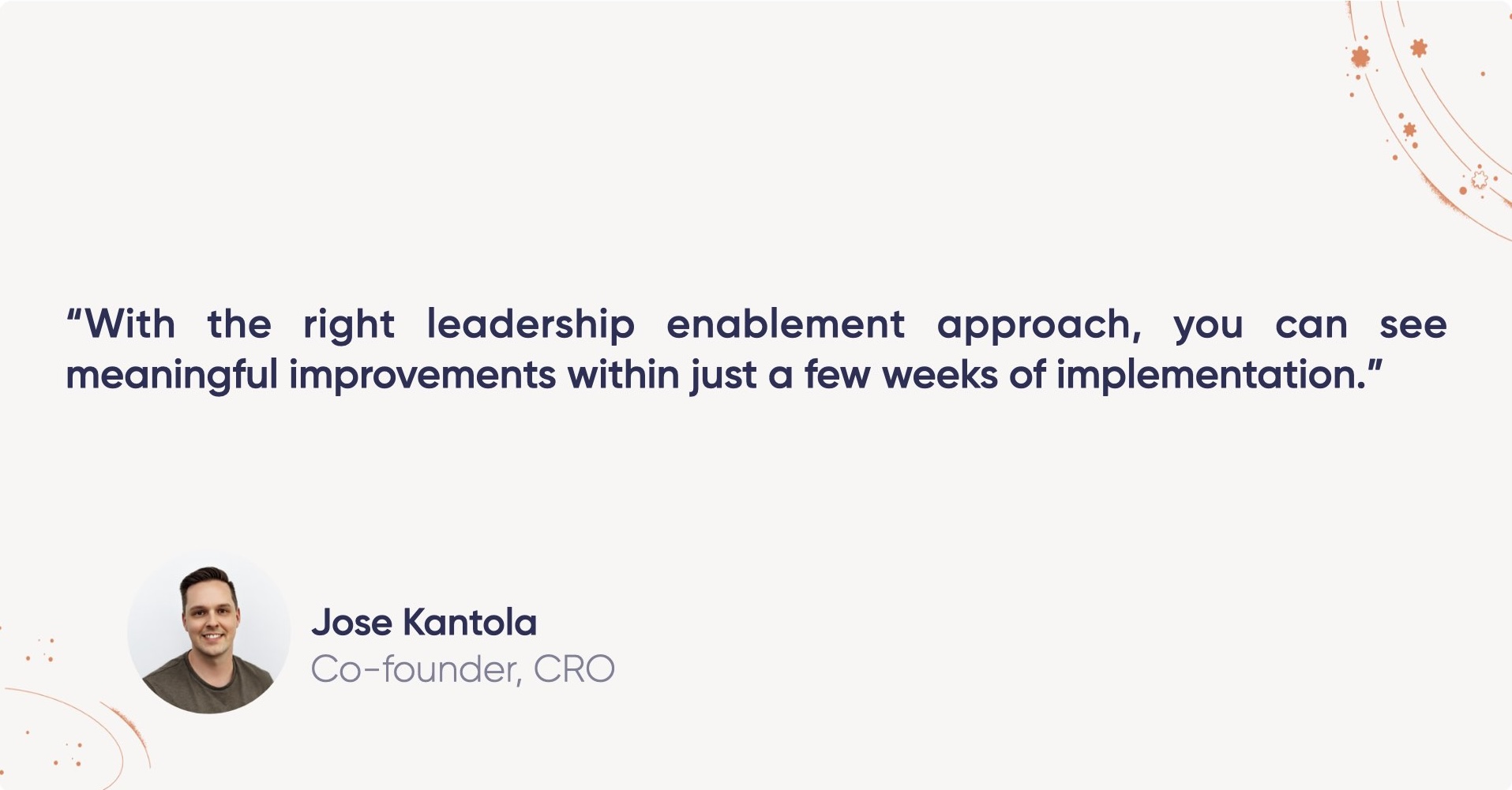Leadership Enablement: How to Equip Your Leaders for Success
May 23, 2025Mediocre leadership directly translates to underperformance. Multiple research articles confirm what many of us see in our work: we need a systematic approach to leadership enablement that gives every leader the tools, insights and support to perform consistently at a high level.
Mediocre leadership directly translates to underperformance. As a leader working with HR and business executives across industries, I’ve witnessed firsthand how leadership quality makes or breaks company success.
Multiple research articles confirm what many of us see in our work: we need a systematic approach to leadership enablement that gives every leader the tools, insights and support to perform consistently at a high level.
What is Leadership Enablement?
Leadership enablement is a holistic approach to ensuring that leaders have the knowledge, support, and skills they need to lead effectively. At its core, it’s about making exceptional leadership normal rather than exceptional.

In practical terms, the leadership enablement process consists of several key components:
- Data collection and integration: Gathering employee engagement data, performance metrics, 360-degree feedback, and collaboration analytics to form a complete picture of your organizational dynamics.
- Knowledge integration: Combining this data with your company’s leadership principles, discussion templates, culture handbooks, and e-learning materials.
- Actionable guidance: Converting these insights into clear, prioritized recommendations that leaders can immediately apply to their specific situations.
- Implementation support: Providing leaders with discussion templates, meeting agendas, and best practices tailored to their unique challenges.
- Success tracking: Measuring the impact of leadership actions to create a continuous improvement loop.
The most powerful leadership enablement happens when you combine these elements to create a personalized experience for each leader, meeting them where they are with guidance specific to their teams and challenges.
Explore Leadership Enablement
Turn insights into action with Teamspective's Leadership Enablement solution.
When Companies Need Leadership Enablement
While all organizations with leaders can benefit from leadership enablement, there are certain situations where it becomes particularly crucial.
When Leadership Quality is Inconsistent
Perhaps the most common scenario I encounter is organizations with wildly inconsistent leadership quality. You have some excellent leaders delivering outstanding results, some who are just getting by, and others who are actively struggling.
This inconsistency creates friction between teams, unclear expectations, and a disjointed employee experience. When employees move between teams, they encounter completely different leadership approaches, creating confusion and reducing effectiveness.

When Many New Leaders Are Being Promoted
Organizations experiencing rapid growth often promote individual contributors into leadership roles without adequate preparation. These new leaders typically have excellent technical skills but limited experience in people management.
Without proper support, they’re forced to learn through trial and error, an expensive and painful approach for both the leaders and their teams.
When There Are Issues with Leader Performance
When teams consistently underperform, have high turnover, or show signs of low engagement, leadership enablement becomes critical. These symptoms often point to underlying leadership challenges that need to be addressed systematically.
The Cost of Mediocre Leadership
The most significant threat to organizational success isn’t necessarily bad leadership. It’s mediocre leadership.
With truly poor leadership, the problems are obvious: high turnover, visible disengagement, and clear performance issues that demand attention. But mediocre leadership often flies under the radar while silently draining your organization’s potential.
Leaders who are “just okay” aren’t utilizing their teams’ full capabilities. They’re not proactively developing their people, creating psychological safety, or removing collaboration barriers. This creates a substantial hidden cost that accumulates over time.

What makes this particularly challenging is that executive teams often don’t see the problem. In one recent client case, we discovered a 20% perception gap between how the executive team viewed the company’s collaboration, communication, and strategy clarity versus how the broader employee base experienced these elements.
The executives - typically the most experienced leaders in the company - rated these areas much more positively than everyone else. This creates a dangerous blind spot that prevents organizations from addressing leadership gaps.
Implementing a Leadership Enablement Program in Your Organization
When implementing leadership enablement, I recommend focusing on making meaningful progress in one area rather than attempting a complete leadership transformation overnight. Here’s what you could do:
1. Map Opportunities and Prioritize
Begin by identifying all potential leadership enablement opportunities in your organization. This might include improving how you collect and use engagement data, establishing more effective feedback processes, enhancing leadership development programs, or optimizing cross-functional collaboration.
Rather than trying to address everything at once, prioritize one area where you can make a complete end-to-end improvement. It’s better to fully implement one leadership enablement process than to half-implement five.
2. Design for Impact and Scalability
Design your chosen initiative to deliver meaningful improvements that reach every leader when they need it most. For example, if you’re focusing on engagement surveys, ensure all leaders — regardless of their experience level or availability — receive instant, clear guidance on what their specific results mean and exactly what actions they should take. The key is creating solutions that don’t require extensive training or time investment, so busy managers can act immediately on insights without waiting for coaching sessions or lengthy analysis periods.
3. Launch Effectively
The launch phase is critical for adoption. Invest time in properly introducing the new process or tool to your leaders, explaining how it will benefit them and their teams. The initial excitement and attention you generate during launch will drive higher participation than trying to boost adoption months later.
4. Iterate and Expand
Once your first initiative is running smoothly, begin improving it or add another leadership enablement process to your program. Continue building a complete ecosystem of support for your leaders.
5. Measure and Communicate Success
Track both the adoption of your leadership enablement processes and their impact on key metrics like engagement, performance, and retention. Share success stories to build momentum across the organization.
The ROI of Leadership Enablement
A well-designed leadership enablement program delivers rapid and significant returns. When implemented properly, you should see measurable improvements within weeks, not months or years.

Short-Term Gains
The immediate benefits come from giving leaders clearer insights and more efficient processes. For example, our client ZoomInfo reduced the time required for 360-degree feedback processes by 50% while simultaneously improving the quality of conversations and outcomes.
This efficiency gain means leaders spend less time on administrative work and more time on value-adding activities with their teams.
Watch the full webinar here.
Long-Term Impact
The long-term ROI of leadership enablement tools includes:
- Reduced turnover: Better leadership directly correlates with higher retention rates, saving significant replacement costs (typically $20,000-50,000 per hire).
- Higher engagement: Teams with enabled leaders show consistently higher engagement scores, which translate to better performance.
- Improved cross-functional collaboration: Leadership enablement breaks down silos, improving organizational agility and innovation.
- Faster employee development: Enabled leaders are better equipped to develop their team members, increasing your organization’s overall capability.
Teamspective’s Approach to Enabling Leaders
At Teamspective, we’ve built a comprehensive Leadership Enablement Platform that helps every leader proactively enhance employee engagement, performance, and collaboration.
Holistic Data Collection
Our platform collects and combines multiple data sources:
- Engagement: Surveys, pulse checks, and anonymous feedback channels
- Performance: Feedback processes, reviews, 360-degree assessments, and recognition
- Collaboration: Organizational network analysis showing how people team up across your company
This holistic approach reveals connections between different aspects of organizational performance that remain hidden in siloed systems.
AI-Powered Leadership Guidance
Through extensive use of AI, we help leaders act faster, save time in planning, and raise leadership quality higher than ever before. Our AI agent:
- Collects and combines data: Integrating employee data with your company handbooks and policies to create a complete understanding with zero additional work for leaders
- Identifies and prioritizes insights: Highlighting the most critical issues and opportunities to help leaders focus on high-impact topics
- Recommends tailored actions: Suggesting specific steps and providing discussion templates that allow every leader to deliver results
The AI approach means we can provide personalized guidance to hundreds of leaders simultaneously, something that would be impossible with traditional HR business partner support alone.
Conclusion
Leadership enablement is a fundamental shift in how we support and develop leaders. By combining data, AI, and human expertise, we can transform mediocre, inconsistent leadership into a consistent competitive advantage.
The organizations that thrive in the coming years will be those that make exceptional leadership the new norm. They’ll create systems that support every leader, not just their high performers or those with access to executive coaching.
The technology and approaches now exist to make this vision a reality. The question is whether your organization will lead this transformation or try to catch up later.



